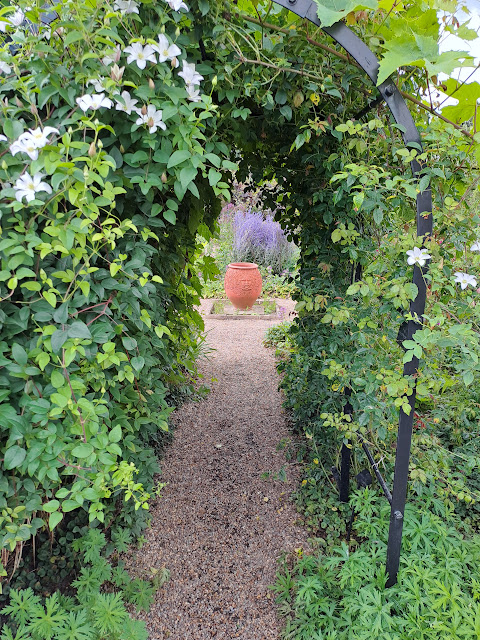Another Tudor House, also belonging to the National Trust, we have visited is Coughton Court in Warwickshire. Since 1409 the Throckmorton family have lived in the house. John de Throckmorton acquired the house through his marriage to Eleanor de Spiney, at the time he was Under Treasurer of England in the reign of Henry VI.
The Throckmorton family still live in the house, some 600 years on, although the National Trust have owned the house since 1946.
As with most National Trust properties the gardens were beautiful. Beautifully laid in keeping with the house with traditional planting including a very fragrant lavender garden.
We visited just before the scaffolding was put up around the house as the roof is in need of urgent repair. The cost will be over £3 million and will take two years to complete.
Coughton Court played an important part in the Gunpowder Plot, a plan to blow up Parliament on 6th November 1605. The ringleader of the Roman Catholic plot was Robert Catesby, he was the son of Sir William Catesby and Anne Throckmorton.
The Midland part of the plot was planned by Sir Everard Digby, he chose Coughton Court as his base and moved in with his wife and two sons. The main plan was to kidnap Princess Elizabeth the eight year old daughter of King James I.
Guy Fawkes' was discovered before he could ignite the 36 barrels of gunpowder hidden below the House of Lords, he was tortured and revealed the other plotters. Word was sent north to Coughton Court where Lady Digby was waiting with Father Garnet, Father Tesimind, Nicholas Owen (famous for designing priest holes) and the Vaux sisters who lived at Baddesley Clinton (a nearby property now also belonging to the National Trust).
The men fled before the plotters arrived but on the 8th November the Sheriff raided the house killing four of the men and capturing the others whi were tired in 1606 and subsequently hung, drawn and quartered.
As work is being done the treasures with in the house have been moved to keep them safe, when we visited the paintings were all being stored in racking in one of the rooms.
However some of the treasures were still display included an impressive silver collection. Safely behind glass is a stunning piece of work, Cope is said to be worked on by Catherine of Aragon, Henry VIII's first wife. It's design includes the Virgin and Child and many saints, made in the early 16th Century when England was a Roman Catholic country.
Also preserved behind glass is the chemise said to have belondpged to Mary Queen of Scots. It is thought to be the chemise she wore at her execution at Fortheringhay Castle. The borders are inscribed in red and dated Feb 11 1587.
Although the house was not fully open it was a super visit, we will certainly return once the restorations have been completed.












No comments:
Post a Comment